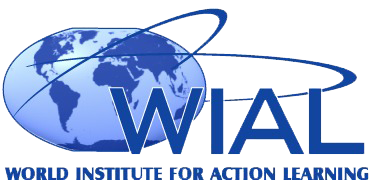Breakthrough Solutions
We have heard the amazing stories of how Action Learning achieves breakthrough solutions thus adding to the bottom-line. A division of a Fortune 500 company boasted of doubling in value in just 18 months because of Action Learning. Action Learning teams think differently – thus seeing the possible instead of being hindered by the obstacles.
This new way of thinking is achieved by the Action Learning process and the skills of the coach. The coach is the catalyst for learning within the team. The coach raises everything to the team’s awareness and then leaves it to the team to determine make a conscious decision how they will work together. The skill of the coach is critical in assisting the team in achieving the deep mind shifts necessary to achieve phenomenal breakthroughs.
Clearly defining the problem
Action Learning teams get to these breakthrough solutions because they start by identifying the real problem before attempting to define the solution. Initially, it feels like defining the real problem slows the team down. Typically, when an organizational challenge exist in a company, a meeting is called to address it. Somewhere between five and 5000 people are invited, so they can come to consensus on the problem. Two or three very dominate people talk passed each other. Ultimately, they take the solution of the most influential person.
In Action Learning we approach the problem very differently. The problem is presented in a minute or two. This is so, the team just hears the crux of the problem, and not superfluous context and theories. Although this limits the problem presentation to what the presenter sees as the crux of the issue – it is almost always a symptom, a solution, or a goal.
Example 1 – a solution presented as a problem:
“We need programs in place to create a positive culture” – but what’s the real problem? In this situation it turned out that the real problem was – “We as leadership ignore conflict that arise between employees hoping it will resolve itself. We must address these situations before they escalate.”
Example 2 – symptom presented as a problem:
”Chemical spills are not being clean up in a timely fashion” – but what’s the real problem? In this situation it turned out that the real problem was – “We have three first responder teams to address different situations. The teams are not clear what is uniquely their responsibility, what responsibilities overlap, nor what to do if they are first on the scene of a situation that is the responsibility of another team.”
Example 3 – a goal presented as a problem:
“How to achieve zero OSHA reportables at all plants” – but what’s the real problem? This is more of a current state versus desired future state situation. The problem is people are dying and being injured on the job. So how do we create the safest possible workforce?
By getting to the real problem, the team fixes the situation once and for all, instead of slapping another Band-Aid on a symptom. The power of this was expressed by the VP at a Fortune 50 company, who responded to a team member frustrated with how long the process was taking, she said – “How many years have we wasted implementing the wrong solution, let’s get it right once and for all.”
Triple Bang for the Buck
Learning moments like this are continually happening in Action Learning sessions. As the team works through identifying the real problem, determining their goal, and fleshing out a solution, the learning coach looks for learning opportunities. When an opportunity presents itself the coach raises it to awareness and facilitating the discussion of how it impacts the team and how they want to move forward. The coach raises all questions with a future, positive focus – planting the seed of positive team dynamics. However, the coach leaves all decisions to the team in terms of how they best process. This is a distinct difference from typical task facilitation, in that the team decides how they best interact.
Additionally, each team member will have identified a leadership skill to work on during the session. The coach and other team members will watch to see when the skills are practiced. At the end of the session, during the final learning, the team will discuss when and how each participant demonstrated their skills.
Consequently, during the session we see a triple bang for the buck – the problem is solved, the team learns how process most effectively, and each member develops as a leader. Countless resources are saved by addressing the real problem. And the organization leaps forward in the market with the breakthrough solution. The Action Learning Coach is the spark that brings the power of the process to this intense level.

Position : President
Company : Carson Consultants
